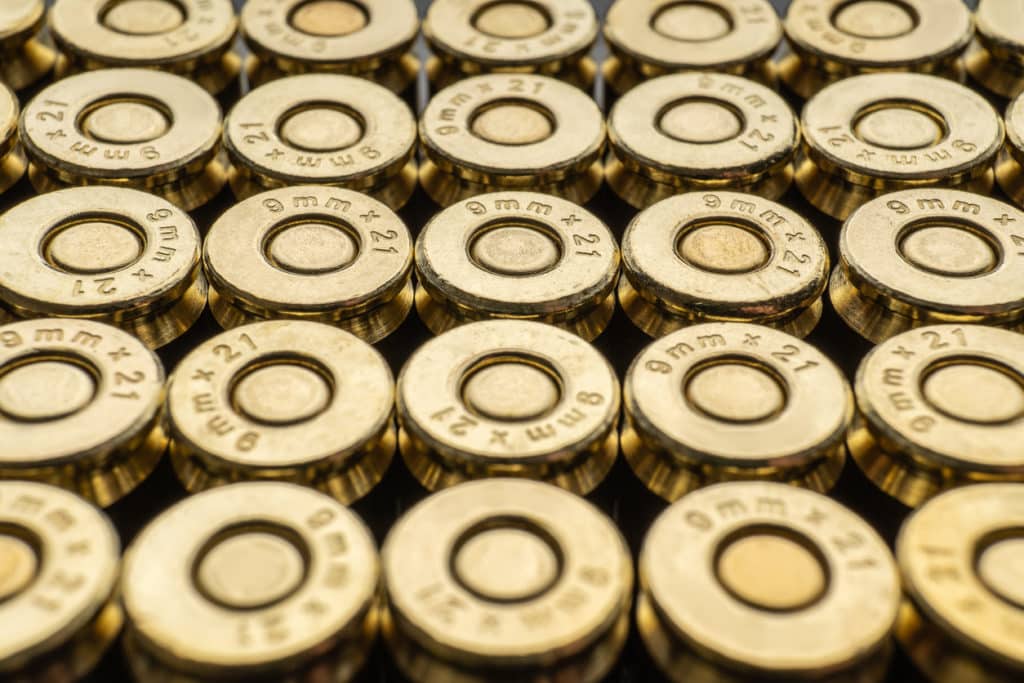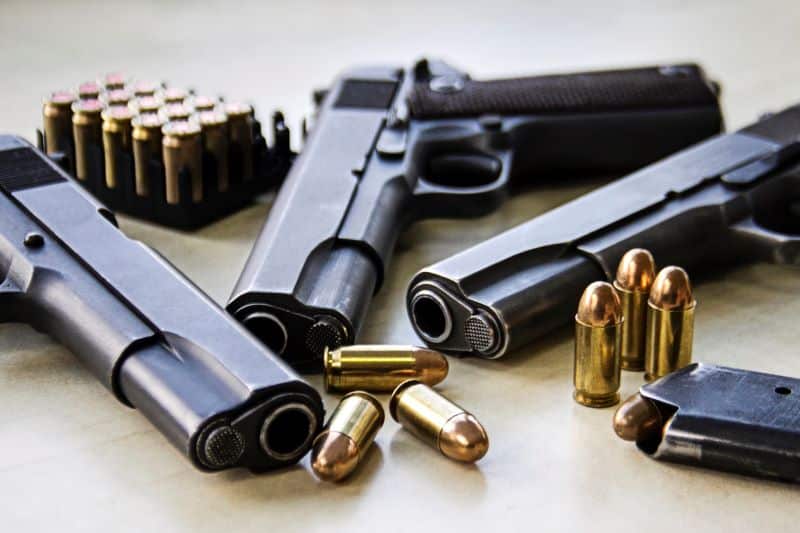While hunters and marksmanship enthusiasts are more familiar with how grain affects shooting performance, the average American gun owner does not understand the importance of making this part of their criteria when purchasing rounds. The team at The Range 702 explains why you should pay attention to grain weight and its effect on recoil, trajectory, and impact, as well as practical applications.
Common Misconception About Grain Weight
Before we get into what grain weight is, let’s first talk about what grain weight is not. Don’t fall into the trap of thinking that the grain weight listed on a box of ammunition represents powder weight or the overall power of the cartridge.
Some people connect the reference of grain weight as being a measurement of the “grains” of gunpowder in the ammo. However, it has nothing to do with that. Grain weight refers to the overall weight of the entire round that is projected from the gun. In fact, different gun powder formulas can have varying weights but still deliver comparable performance levels.
What Is Grain Weight?
The grain weight system is used to measure the mass of a piece of ammunition. Measuring in grain (gr) is a measuring system to describe the mass of the cartridge projectile (the part that is propelled forward from the firearm). These measurements of mass help determine the correct size of ammo to use for specific shooting purposes.
Ready to improve your shooting? Book a training class with our skilled instructors at The Range 702 in Las Vegas!
Understanding Grain Weight and Firearms
Rounds of ammunition for handguns and rifles come in cartridges made up of the following parts:
- Primer
- Propellant
- Casing
- Projectile
Shotgun shells are structurally different and require one more part known as a wad.
The weight of the projectile is measured in grains using the grain symbol gr. When converted using the metric system, there is approximately 7,000 grain in one pound. The weight of a paper clip is about 16 grain.
The mass of the 5.56 NATO rounds1 for the M4 carbines is 62 grain, which equals around four paperclips. However, there are other versions of this ammunition for AR-15 rifles with 55 grain for a lighter projectile.

Selecting the Right Grain Weight for Your Shooting Purposes
There are some things to consider when choosing the right grain to help with your shooting performance, including:
- Caliber – Caliber is the internal diameter of the barrel and is the first factor to consider when selecting ammunition. The rounds must fit the magazine, chamber, and barrel, which requires a specific shell size. Cartridges come in a range of calibers and grain. Heavier grain results in a larger projectile, but the difference is not always noticeable.
- Ballistics – The grain weight of ammunition will affect ballistics (velocity, energy, and overall shot performance). Ballistics considers the mechanics of how a shot behaves and is an important factor in choosing cartridge weight to match its purpose.
- Joules – Grain affects recoil energy (pushback the shooter feels from the gun once discharged) and the energy put downrange. This energy is expressed in a unit of measurement called joules. When you feel the recoil of standard grain, think about the following: heavier grain weight will have greater recoil force while lighter grain will have less. Likewise, grain weight affects the energy felt by the target.
Learn more shooting tips from the experienced instructors at The Range 702. Contact us to book a lane today!
Which Grain Weight Is Best for Shooting?
The answer to which grain weight is best depends on the type of shooting and which firearm you’re using. Here are some various applications and their recommended grain weight:
1. Routine Range Shooting
Understanding grain weight isn’t as important when first becoming familiar with various firearms. For beginners, there is a standard size and grain weight for all ammunition types and brands. For the range, the 55 grain for AR-15 and other 5.56/.223 rifles are adequate because you will aim at targets positioned in short to medium distances.
2. Hunting
You generally want heavier grain weight to deliver more energy into the game, but this may also depend on animal species. Hunters who do not want to leave blood trails, meaning they prefer a more humane shot that drops the game on the spot, will go for heavier grain. A heavier grain also means that they may have to do more stalking to get closer because heavier cartridges travel slower.
3. Self-Defense
Self-defense situations typically occur at close ranges of at least 21 feet from the threat2. Should you need to engage a threat, you want the stopping power that heavier rounds provide. While considering round weight and energy, you should choose rounds that are less likely to pass through a target, which means lost energy and additional hazards. Even though self-defense rounds are commonly more expensive, you should practice shooting these at a range to ensure they feed and fire without malfunction in your firearm, and to familiarize yourself with how they shoot.
4. Marksmanship
Sport shooting of rifles at longer distances may require lighter grain ammunition. Other factors, such as wind conditions and the type of rifle, should also be considered.
In conclusion, choosing adequate grain weight is essential to your real-life shooting experiences. Getting used to various ammunition weights will also help you improve the handling of your firearm.
Visit The Range 702 in Las Vegas
If you’re interested in getting a personal feel of what these various ammunitions feel like, check out our shooting experiences and gun vault! Get expert advice from our instructors and sign up for one of our many classes that will help you learn how to handle your gun better.
Sources:
1Wikipedia. 5.56×45mm NATO. Retrieved on 20 December 2021.
2Findley, Ben. (8 April 2015). What is Your Safe Distance to Engage the Threat: The 21-Foot Rule. USA Carry. Retrieved 20 December 2021.












































